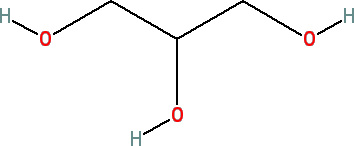Glycerin
Safety Information
Expert Panel for Cosmetic Ingredient Safety
Scientific data supporting the safety of glycerin as used in cosmetics and personal care products was thoroughly reviewed in 2014 by the Expert Panel for Cosmetic Ingredient Safety. Based on the available literature and data, the Expert Panel concluded glycerin is safe in the present practices of use and concentration (i.e., up to 79% in leave-on products, 99% in rinse-off products).
The available scientific data for glycerin demonstrated low oral and dermal (skin) adverse effects following single and repeated doses. In addition, data showed there were no reported allergic skin reactions in human clinical studies.
In multiple laboratory reproduction and developmental safety studies, glycerin did not produce any adverse effects on parental reproductive capability or growth development, fertility, or reproductive performance of their offspring. In a human fertility study of male employees who manufacture synthetic glycerin and who would be expected to be exposed to higher levels of the material than consumers using cosmetics, there were no differences observed in sperm counts or percentage of normally shaped sperm compared with a group who did not work with glycerin.
In addition, multiple laboratory studies showed glycerin did not cause genetic mutations nor was there evidence of increased tumor incidence where both natural and synthetic glycerin were administered orally for up to two years (i.e., glycerin does not cause cancer).
FDA
The U.S. Food and Drug Administration (FDA) recognizes glycerin as generally recognized as safe (GRAS) for its use in food packaging and it is a multiple-purpose GRAS food substance when used in accordance with good manufacturing practices. Glycerin is on FDA’s list of approved direct and indirect food additives. Also, glycerin is FDA-approved for use in over-the-counter (OTC) drugs such as anorectal drug products, skin protectants, ophthalmic drugs, and oral health care products.
Glycerin is listed on the EU’s Inventory of Cosmetic Ingredients (CosIng) and is not restricted in any way, according to the general provisions of the Cosmetics Regulation of the European Union. Glycerin derived from raw materials of animal origin must comply with European Union animal by-products regulations.
According to Canada’s List of Ingredients that are Restricted for Use in Cosmetics, product manufacturers of oral and leave-on products containing glycerin must ensure the raw material used is within the specifications of an accepted pharmacopoeia with respect to diethylene glycol (DEG) impurities (e.g. Glycerin Official Monograph in the most current edition of the USP).
